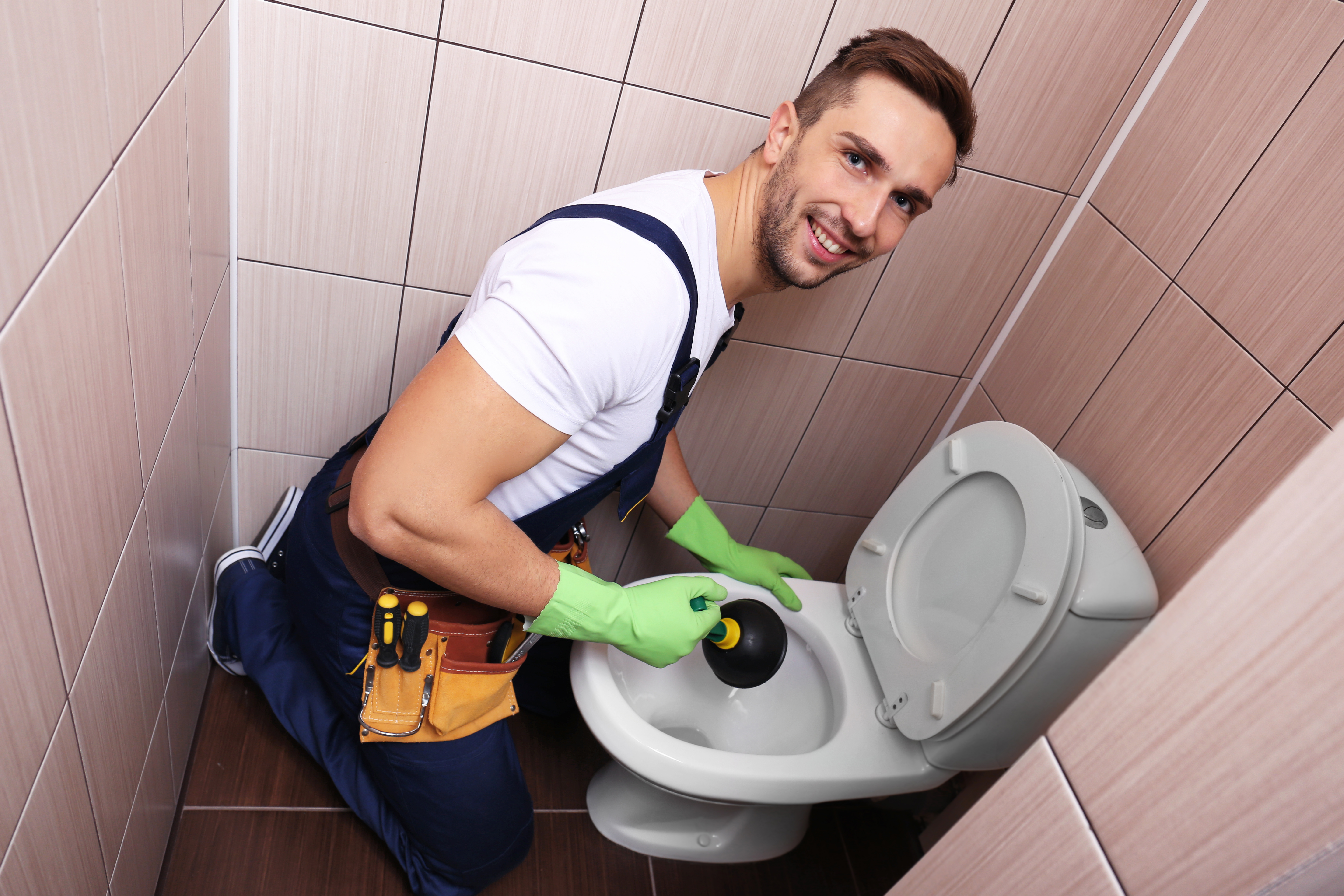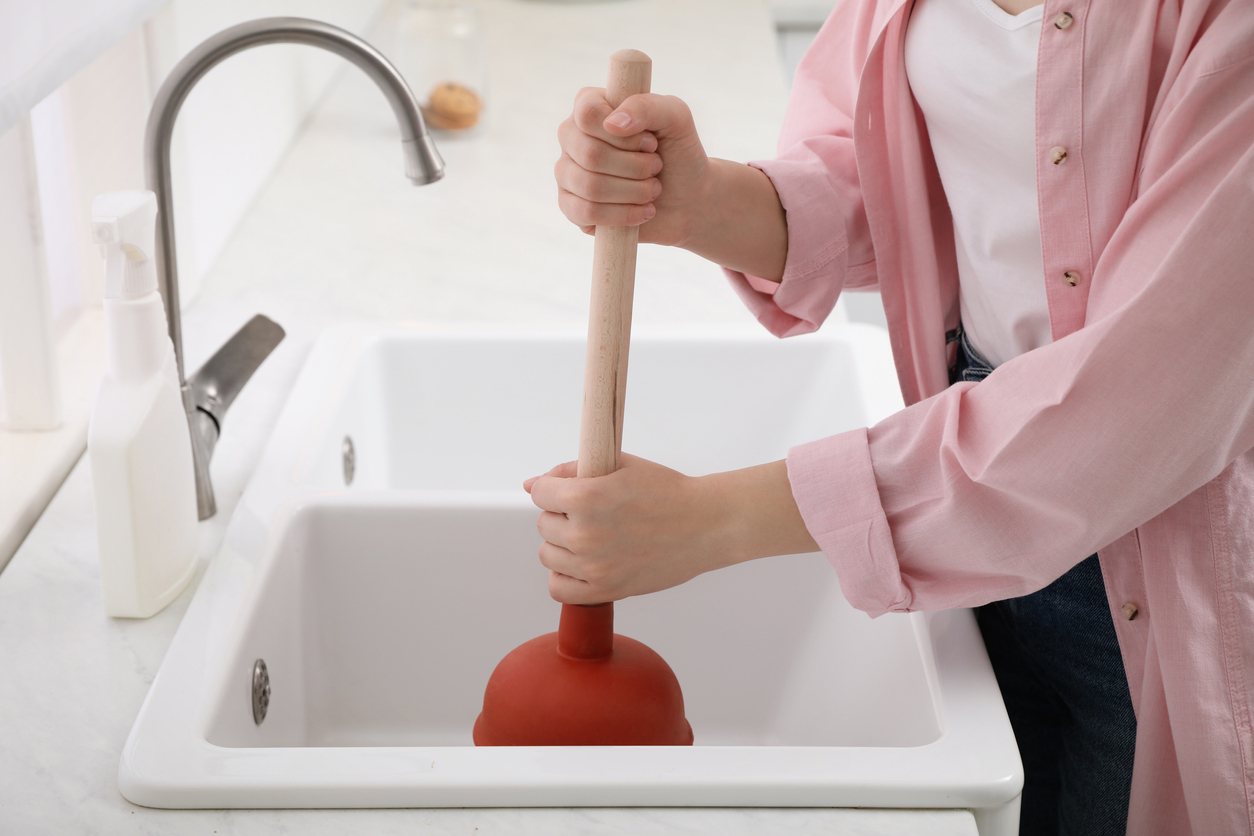How to Properly Apply Plunger and Drain Cleaners: Professional Advice
How to Properly Apply Plunger and Drain Cleaners: Professional Advice
Blog Article
We have encountered this article pertaining to Here's How to Correctly Use a Toilet Plunger listed below on the web and accepted it made sense to share it with you here.

Intro
Proper maintenance of house drains is important for stopping clogs and making sure smooth water flow. Among the trick tools in every property owner's toolkit is the plunger, alongside various drain cleansers developed to tackle persistent blockages successfully. This post checks out exactly how to utilize bettors and drainpipe cleaners efficiently to keep your drains streaming freely.
Section 1: Understanding Bettors
Kinds of Plungers
There are several types of bettors available, each made for different types of drains and clogs. One of the most common types consist of mug plungers, flange plungers, and accordion bettors.
How Plungers Work
Bettors work on the principle of producing pressure and suction to remove obstructions. When correctly used over a drainpipe, they produce a vacuum that can pull out debris or break up blockages.
Choosing the Right Plunger
Choosing the ideal bettor depends upon the kind of drainpipe and the nature of the clog. Mug bettors are ideal for sinks and tubs, while flange plungers are better suited for commodes as a result of their design.
Usual Blunders with Bettors
Avoiding these mistakes makes sure reliable plunging: improper seal around the drainpipe, insufficient pressure, and unclear bordering particles.
Area 2: Utilizing Plungers Successfully
Preparation
Before diving, make certain the bettor covers the drain totally and creates a tight seal. Clear any type of visible particles around the drain opening.
Technique
Start with mild diving activities to construct suction. Rise pressure gradually, utilizing a stable rhythm. Repeat as essential up until the drainpipe clears.
Repairing Tips
If plunging does not work, attempt changing the seal, using petroleum jelly for a far better seal, or using a various sort of plunger.
Section 3: Recognizing Drain Cleansers
Sorts Of Drain Cleaners
Drain cleaners can be chemical or enzymatic. Chemical cleansers make use of solid chemicals to liquify clogs, while enzymatic cleansers make use of all-natural enzymes to break down raw material.
How Drain Cleansers Job
Chemical cleaners respond with blockages to dissolve them, while chemical cleansers break down natural materials like hair and oil without harming pipelines.
Safety and security Considerations
Constantly use gloves and eye protection when utilizing chemical drainpipe cleaners. Ensure ample air flow and follow producer guidelines thoroughly.
Eco-Friendly Alternatives
Take into consideration utilizing vinegar and cooking soft drink or enzyme-based cleaners for environment-friendly alternatives that are more secure for pipelines and the setting.
Section 4: Using Drain Cleaners Successfully
Application Methods
Put chemical cleansers straight into the drain opening. Allow them to work for the recommended time prior to purging with hot water. Chemical cleansers must sit overnight.
Precautions
Avoid blending different types of cleansers, as this can create poisonous fumes. Never ever use chemical cleaners combined with a bettor, as splashing can occur.
Dealing With Stubborn Obstructions
For relentless blockages, consider making use of a plumbing serpent or calling a specialist plumber to stop damages to pipelines.
Final thought
In conclusion, comprehending exactly how to make use of plungers and drainpipe cleansers successfully is important for keeping healthy pipes systems. By choosing the right devices and techniques, homeowners can deal with small clogs and avoid significant plumbing issues down the line.
How to Use a Plunger to Unclog a Drain
The humble plunger is a simple yet effective tool for breaking clogs in sinks, tubs and toilets. This handy tool is easy to use. You can make the most of its power if you understand how it works. Ready to dive in? Here’s what you need to know.
Safety First!
Never use a plunger with drain chemicals. Water will splash as you work, and the chemicals can spatter, burning skin and eyes. It’s a good idea to use rubber gloves and wear safety goggles when you work on a clog.
Choose the Right Tool for the Job
Plungers come in two different styles. Sinks, bathtubs and showers require a cup plunger. Like its name suggests, the rubber end is shaped like a cup. Use a flange plunger on toilets. These plungers have a rubber funnel extending from the cup. A plunger needs to be big enough to cover the drain.
Ready, Set, Plunge!
Coat the rim: Coat the plunger rim with petroleum jelly. This helps make a better seal.
Block outlets: Hold a wet rag over nearby outlets such as the overflow vent or the drain in a second sink.
Release air: Insert the plunger at an angle into the water. Water will displace air in the cup. A water-filled cup is more forceful than one filled with air.
Keep the plunger upright: Hold the plunger perpendicular to the drain. Use fast, forceful strokes, but make the first stroke gentle. The first stroke can create a splash if the cup still contains air. Thrust the plunger 15 to 20 times.
Snap off the plunger: The final stroke should be a strong upward motion that ends when the plunger snaps off the drain.
Repeat the process: you may need to repeat this sequence several times. When the water drains away, your work is done. High-five! https://plumbernw.com/blog/how-to-use-a-plunger-to-unclog-a-drain/

Application Methods
Put chemical cleansers straight into the drain opening. Allow them to work for the recommended time prior to purging with hot water. Chemical cleansers must sit overnight.
Precautions
Avoid blending different types of cleansers, as this can create poisonous fumes. Never ever use chemical cleaners combined with a bettor, as splashing can occur.
Dealing With Stubborn Obstructions
For relentless blockages, consider making use of a plumbing serpent or calling a specialist plumber to stop damages to pipelines.
Final thought
In conclusion, comprehending exactly how to make use of plungers and drainpipe cleansers successfully is important for keeping healthy pipes systems. By choosing the right devices and techniques, homeowners can deal with small clogs and avoid significant plumbing issues down the line.
How to Use a Plunger to Unclog a Drain
The humble plunger is a simple yet effective tool for breaking clogs in sinks, tubs and toilets. This handy tool is easy to use. You can make the most of its power if you understand how it works. Ready to dive in? Here’s what you need to know.
Safety First!
Never use a plunger with drain chemicals. Water will splash as you work, and the chemicals can spatter, burning skin and eyes. It’s a good idea to use rubber gloves and wear safety goggles when you work on a clog.
Choose the Right Tool for the Job
Plungers come in two different styles. Sinks, bathtubs and showers require a cup plunger. Like its name suggests, the rubber end is shaped like a cup. Use a flange plunger on toilets. These plungers have a rubber funnel extending from the cup. A plunger needs to be big enough to cover the drain.
Ready, Set, Plunge!
Coat the rim: Coat the plunger rim with petroleum jelly. This helps make a better seal. Block outlets: Hold a wet rag over nearby outlets such as the overflow vent or the drain in a second sink. Release air: Insert the plunger at an angle into the water. Water will displace air in the cup. A water-filled cup is more forceful than one filled with air. Keep the plunger upright: Hold the plunger perpendicular to the drain. Use fast, forceful strokes, but make the first stroke gentle. The first stroke can create a splash if the cup still contains air. Thrust the plunger 15 to 20 times. Snap off the plunger: The final stroke should be a strong upward motion that ends when the plunger snaps off the drain. Repeat the process: you may need to repeat this sequence several times. When the water drains away, your work is done. High-five! https://plumbernw.com/blog/how-to-use-a-plunger-to-unclog-a-drain/

I ran across that content about Tips on How to Effectively Use a Plunger while scouting around the web. In case you enjoyed reading our blog entry plz do not forget to pass it around. Many thanks for your time. Don't hesitate to come by our blog back soon.
Click On This Link Report this page